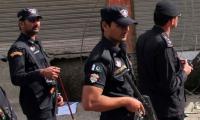At about the same time Prime Minister Imran Khan was launching the ambitious Kamyab Jawan Programme at the Convention Centre in Islamabad on Thursday, in the presence of a large and enthusiastic gathering of the party’s young activists, a crowd of mostly students was raising slogans in Shangla district against Khyber Pakhtunkhwa Minister of Information Shaukat Ali Yousafzai, who had to be escorted out of the place in tight security.
There is no need to go into details about the Shangla incident. It would, also, not attract much attention. Imran Khan’s project to disburse ‘merit-based’ loans among young people who come up with innovative and feasible business ideas was all across the media. It may have brought some relief to the frayed nerves of the PTI supporters. The amount allocated is Rs100 million.
However, I feel that this juxtaposition of the two events would be an appropriate preface to an inquiry into the existing condition of the youth in Pakistan. This may seem to be a distraction from all that political hullaballoo concerning Maulana Fazlur Rehman’s ‘Azadi March’ that on Friday also won the alliance of the PML-N. There is anxious anticipation about how it will play out.
But while we can wait for the promised assault on Islamabad on the last day of this month, with bated breath, the quandary in which young men and women find themselves is eminently worthy of national attention, even if no ready excuse, in terms of a journalistic peg, is available. It is a crisis that can activate a major upheaval in our society that has more serious consequences than any political agitation can accomplish.
It is true that the young are frequently mentioned in official statements and in varied national analyses. Any reference to education, particularly higher education, is bound to underline the disaster that is staring us in the face. Since we, demographically, are an exceptionally young country, the magnitude of the storm that is building up is bound to be enormous. Schemes like the one launched on Thursday – and it is not so innovative – can hardly stem the tide.
Almost all the statistics that relate to the youth in our uncontrolled growth in population are scary. It is really ironic that, instead of becoming an asset, the young in Pakistan are becoming a big liability because they are not adequately educated and are mostly devoid of the required skills. Only around five percent within the age bracket of 18 to 25 years are fortunate to acquire higher education.
So what happens to the rest of Pakistan’s young people? All together, they are about 140 million of them. We are told that about 25 million children are out of school. Consider the ignominy of the fact that, according to the United Nations, more than 44 percent of Pakistani children under the age of five suffer from stunted growth due to chronic malnutrition. Ours is the third highest rate of stunting among young children in the world. And children grow every day to join the floating hordes of the young.
The real tragedy is that our young people are not able to be young in spirit and action. They are not allowed the freedom that is the prerogative of youth, including in an academic context. Apparently, it is a reflection of the poor quality of education of our rulers that they now suppress the dissemination of liberal and progressive ideas on the campus. There are issues that are not allowed to be debated.
Imran Khan is often seen as a leader who has fired up a section of Pakistan’s youth. His slogan for ‘tabdeeli’ does resonate with the youth’s inherent craving for change and even rebellion. Among other things, he had promised to provide 10 million jobs to the youth after coming into power. But prospects for educated young people are now growing dark in the wake of the economic difficulties.
One squabble this week was centred on Federal Minister for Science and Technology Fawad Chaudhry’s statement that providing jobs is not the responsibility of the government. Irrespective of the validity of his argument that jobs are created by the private sector and not the government, here was another allusion to the plight of the young in Pakistan.
Considering that the young constitute an overwhelming component of our huge population, we should be very concerned about their well-being and prospects. In developing countries like Pakistan, movements launched by students have had a decisive impact on national politics. But our college and university students have lost that capacity, thanks to the regressive policies of successive governments.
Incidentally, there is one particular instance that highlights the subversive nature of the academic environment that is available on our campuses. It has been revealed that the students of Balochistan University were being filmed by secret cameras installed even in washrooms and smoking areas. This scandal led to the Balochistan High Court’s decision to take suo-motu notice of the matter and a committee was set up by the speaker of the Balochistan Assembly to investigate reports of blackmailing and harassment of students, particularly women students.
The Human Rights Commission of Pakistan, expressing its concern on this scandal, quoted sources that claimed that “the surveillance system is used as a means of moral policing as well as to disrupt any potential or suspected political activism among students...”.
Obviously, the female students would feel more under threat. Already, there have been reports of sexual harassment on a number of campuses. Balochistan is specifically deficient in the context of female education. Female literacy in the province is quite low. It is reported that the FIA has been able to trace 12 videos that were used to blackmail and harass female students.
In a larger perspective, our entire system of education is becoming a scandal. Recent cuts in financial allocations for the public universities have worsened the situation. Consequently, the quality of our human resources is deteriorating at an alarming pace. In many cases, the unemployed may also be unemployable.
The writer is a senior journalist.
Email: ghazi_salahuddin@hotmail.com
India uses Afghanistan as a backstage area to carry out terrorist attacks against Pakistan
Another report by the Pakistan Institute of Peace Studies states that 78 per cent of attacks have been carried out by...
Pakistan stands at the forefront of this crisis, generating a staggering 3.3 million tonnes of plastic waste annually
Today, a total of 11,000 children are attending Daanish schools in Punjab
The emotional instability of parents inculcates a range of psychological issues in children
The current way of dealing with the environment and climate change is no longer adequate







